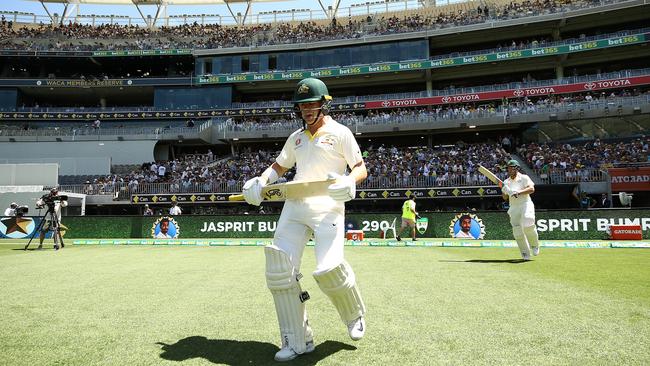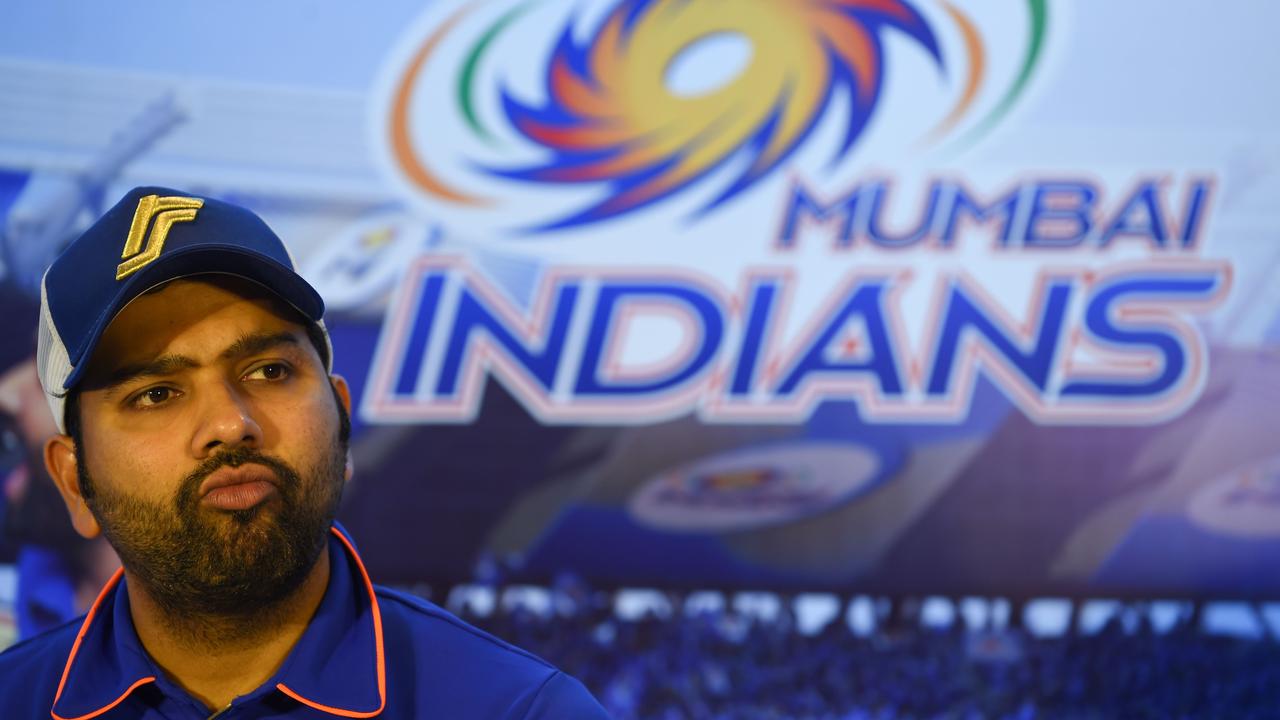Perth delivers a pitch of ups and downs
A fitful pitch spiced up a day’s play in a stadium that lacks the charm of the WACA.

During his 1960s apprenticeship as the nation’s favourite conman, Alan Bond notoriously bought several miles of sand dunes at Yanchep, applied bitumen and green paint, and sold the lots as grassy coastal frontages. Perth Stadium followed yesterday in the same West Australian real estate traditions.
Since the retirement of the WACA Ground was foreshadowed five years ago, there has been much concern about the preservation of its vital spark at cricket’s new premises. The project manager insisted that the new drop-in pitch would provide “speed and bounce” because “that’s what cricket in Western Australia is famous for”, the curator this week described his mandate from Cricket Australia as being “to get that fear in the eyes of the opposition turning up and seeing it fly”.
As Virat Kohli and Tim Paine walked out yesterday morning, the pitch was discernible on the square mainly thanks to the presence of stumps, and the talk was of green mambas, shifting plates of turf, and three-day Tests.
When Kohli handed over his team sheet, it offered little change out of 140km/h. When Paine won the toss, he took first innings with just a tremor of insecurity. It turned out that India had bought a sandhill.
Not that Marcus Harris and Aaron Finch were to know that as they set out to sink foundations for Australia’s innings. They’d first have noticed the radical change in cricket’s neighbourhood, from the WACA, with its feel of an old suburb before the processes of gentrification, to the stadium, more like a gated community built for a multinational.
No doubt it will serve Australian rules football well. But compared to the WACA it has all the atmosphere of an aircraft hangar, all the history of a 7-Eleven, and its largely deserted terraces yesterday featured more shades of grey than a novel by Graham Greene.
As far as the pitch was concerned, it took only a few overs to discount the presence of too many demons; by the time the pair had raised 0-100 in the 34th over, doubling Australia’s best partnership in Adelaide, the surface appeared positively benign.
Finch battled away with his technique, rising above it by dint of his temperament. Harris enhanced the favourable impression he made in Adelaide with decisive footwork and versatile strokes, punching down the ground and square of the wicket with equal facility.
One end at Optus Stadium is named for Justin Langer. Harris perpetuates his coach more actively. The compact left-handedness; the wafture of the bat as he abjures a stroke; the turn of the head that brings the left eye into play: with a Matthew Hayden at the other end, he would be almost a dead ringer.
“Mediocre with flashes of brilliance”, Langer once called him; the coach’s judgment yesterday could have been revised to “composed and competent with flashes of me”.
In the end, more sere and yellow by the hour, the pitch played well — interestingly, at least.
Much attention focused on a full ball from Mohammed Shami that rose no higher than Harris’s ankle and a bouncer from Umesh Yadav that cleared the keeper’s outstretched gauntlet.
Mind you, the day’s most challenging delivery was purveyed by the ersatz offspinner Hanuma Vihari, rearing at Harris’s sternum and taking the edge on the way to slip — Nathan Lyon would have taken note.
There was sufficient encouragement for the pacemen in the afternoon that the pride of Western Australia was preserved, and that the Indians were not left feeling all dressed up with nowhere to bowl.
Pitting their fitness against the sapping heat, Ishant Sharma, Umesh Yadav, Mohammed Shami and Jasprit Bumrah came back for second, third and fourth spells at fuller lengths, tighter lines and impressive velocities.
India’s outcricket was less even.
Kohli took a superslick catch at second slip, Rishabh Pant dropped a straightforward nick at the wicket. Had the keeper held Shaun Marsh (24) off Vihari, Australia would have been 5-186 with a new ball due within the hour and a tail in view.
As it was, Marsh and Head prolonged their partnership to 84 from 137 deliveries — the day’s second useful alliance, amid a growing sense that batting conditions might not grow much more favourable, and runs on the board will be doubly valuable.
For a Test pitch is not to be judged on a single day any more than a painted sandhill.
Up close, the surface already features a lattice of cracks; no climate could be better suited to widening them by sapping the binding grass’ last moisture. With minutes to go, a delivery from Bumrah with the second new ball seamed jaggedly past Paine’s outside edge.
India having preferred Vihari to Ravindra Jadeja and Yadav to Bhuveneshwar Kumar are also lighter for batting than at Adelaide Oval.
They would not want to repeat their first-innings misadventures of last week.
Alan Bond once opined that he regretted nothing he’d done, only what he hadn’t.
Kohli might find that that applies to batting first at Optus Stadium.


